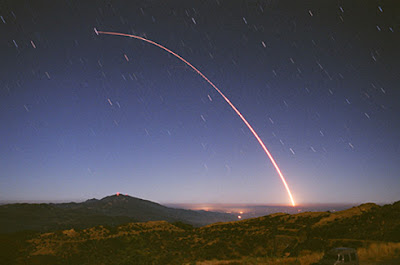Thursday, May 09, 2013
Too Hot to Handle
When we think of nuclear screw ups it's usually the Soviet Union/Russia that comes to mind - Chernobyl, submarine accidents, old nuclear reactors jettisoned at sea, that sort of thing.
It turns out the United States has its own nuclear quagmire, the 586-square mile Hanford Nuclear Reservation in Benton county, Washington, hard alongside the Columbia River. They've been accumulating nuclear waste at Hanford going back to the Manhattan Project in WWII. From the early 40s until the last reactor was shut down in 1987, some 208 million litres of nuclear waste was held in now-decaying underground tanks on the site.
Big plans have been underway for years to relocate all that dangerous nuke waste and store it for centuries at something called the Waste Treatment and Immobilization Plant. There's a snag. Officials now think the waste has become way too dangerous to handle. They're a little twitchy over potential chain reactions, hydrogen explosions and leaks caused by metal corrosion.
Time is not on their side. About 60 of the 177-underground tanks are already leaking and the rest are considered in danger of following suit.
Overall, the tanks hold every element in the periodic table, including half a ton of plutonium, various uranium isotopes and at least 44 other radionuclides—containing a total of about 176 million curies of radioactivity. This is almost twice the radioactivity released at Chernobyl, according to Plutopia: Nuclear Families, Atomic Cities, and the Great Soviet and American Plutonium Disasters, by Kate Brown, a history professor at the University of Maryland, Baltimore County. The waste is also physically hot as well as laced with numerous toxic and corrosive chemicals and heavy metals that threaten the integrity of the pipes and tanks carrying the waste, risking leakage.
The physical form of the waste causes problems, too. It’s very difficult to get a representative sample from any given tank because the waste has settled into layers, starting with a baked-on “hard heal” at the bottom, a layer of salt cake above that, a layer of gooey sludge, then fluid, and finally gases in the headspace between the fluid and the ceiling. Most of the radioactivity is in the solids and sludge whereas most of the volume is in the liquids and the salt cake.
As Bart Simpson would say, "Ay, Carumba!" But wait, there's more! This time the focus is on the men and women who hold the launch keys for America's nuclear missile arsenal. In Minot, North Dakota, 17 of them have been pulled off alert duty and sent for retraining.
The Air Force is putting a brave face on the incident, downplaying its significance. But the official account doesn't square with an internal e-mail from the deputy commander of the operations group who wrote,
"We're discovering such rot in the crew force that your behavior while on alert is accepting of [violations in weapons safety directives, possible compromises in launch codes and other shortcomings] all in the name of not inconveniencing yourselves."
Subscribe to:
Post Comments (Atom)


2 comments:
What with ocean acidity, nuclear waste leaks and population explosions on top of the environmental apocalypse (tm) facing us I have to ask if you still think I'm being overly pessimistic when I say humanity's number is up?
The quandry I have, Dana, is what is the point of answering the question you pose? Is it even capable of a "yes/no" response?
Do we face total extinction? Probably not of our own doing although we could have something akin to that eventually. Some, such as Lovelock, have written of humanity in just a few hundred millions (in Lovelock's term "breeding pairs") who will struggle on in a civilization essentially reset to the era of barbarism.
I suppose my concern is that, if we dwell on your question, does that mean accepting something similar to Andean Fatalism?
Or should we, for the sake of humanity, put that question aside and continue to seek solutions and responses no matter their apparent futility?
Post a Comment